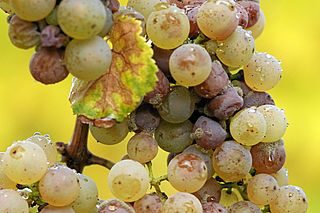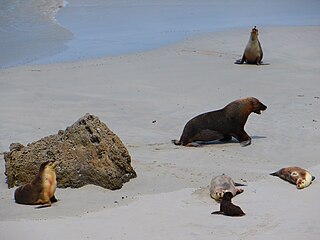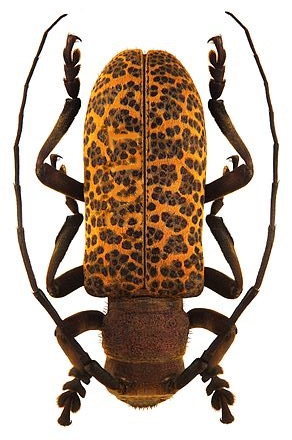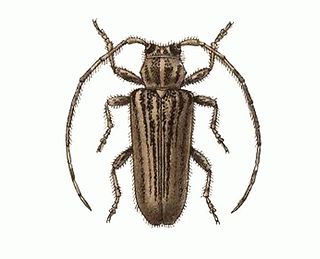
Noble rot is the beneficial form of a grey fungus, Botrytis cinerea, affecting wine grapes. Infestation by Botrytis requires warm and humid conditions, typically around 20 degrees Celsius and above 80% humidity. If the weather stays wet, the undesirable form, "bunch rot" or "grey rot", adversely affects winemaking by disrupting fermentation and changing the taste, aroma, and appearance of the final wine Grapes typically become infected with Botrytis when they are ripe. If they are then exposed to drier conditions and become partially raisined, this form of infection is known as noble rot. Grapes picked at a certain point during infestation can produce particularly fine and concentrated sweet wine. Wines produced by this method are known as botrytized wines, and are considered a distinct category of dessert wines.

Botrytis cinerea is a necrotrophic fungus that affects many plant species, although its most notable hosts may be wine grapes. In viticulture, it is commonly known as "botrytis bunch rot"; in horticulture, it is usually called "grey mould" or "gray mold".

The grey heron is a long-legged wading bird of the heron family, Ardeidae, native throughout temperate Europe and Asia, and also parts of Africa. It is resident in much of its range, but some populations from the more northern parts migrate southwards in autumn. A bird of wetland areas, it can be seen around lakes, rivers, ponds, marshes and on the sea coast. It feeds mostly on aquatic creatures which it catches after standing stationary beside or in the water, or stalking its prey through the shallows.

The grey wagtail is a member of the wagtail family, Motacillidae, measuring around 18–19 cm overall length. The species looks somewhat similar to the yellow wagtail but has the yellow on its underside restricted to the throat and vent. Breeding males have a black throat. The species is widely distributed, with several populations breeding in Eurosiberia and migrating to tropical regions in Asia and Africa. The species is always associated with running water when breeding, although they may use man-made structures near streams for the nest. Outside the breeding season, they may also be seen around lakes, coasts and other watery habitats. Like other wagtails, they frequently wag their tail and fly low with undulations and they have a sharp call that is often given in flight.

The Australian sea lion, also known as the Australian sea-lion or Australian sealion, is a species of sea lion that is the only endemic pinniped in Australia. It is currently monotypic in the genus Neophoca, with the extinct Pleistocene New Zealand sea lion Neophoca palatina the only known congener. With a population estimated at 14,730 animals, the Wildlife Conservation Act of Western Australia (1950) has listed them as "in need of special protection". Their Conservation status is listed as endangered. These pinnipeds are specifically known for their abnormal breeding cycles, which are varied between a 5-month breeding cycle and a 17-18 month aseasonal breeding cycle, compared to other pinnipeds which fit into a 12-month reproductive cycle. Females are either silver or fawn with a cream underbelly and males are dark brown with a yellow mane and are bigger than the females.

The Asian small-clawed otter, also known as the oriental small-clawed otter and the small-clawed otter, is an otter species native to South and Southeast Asia. It has short claws that do not extend beyond the pads of its webbed digits. With a total body length of 730 to 960 mm, and a maximum weight of 3.5 kg (7.7 lb), it is the smallest otter species.

Juglans cinerea, commonly known as butternut or white walnut, is a species of walnut native to the eastern United States and southeast Canada.

Erica cinerea, the bell heather, is a species of flowering plant in the heath family Ericaceae, native to western and central Europe.

Vitis cinerea, the graybark grape, is a variety of grape. It has small black berries that are mildly unpleasant to eat. Plentiful in Missouri and Louisiana, it is also found throughout the eastern half of the US as far west as Texas, north to Illinois, and south to Florida. It is also known by the name winter grape or possum grape.

Salix cinerea is a species of willow native to Europe and western Asia.

Gervais's fruit-eating bat is a bat species found in Brazil, French Guiana, Guyana, eastern Peru, Suriname and eastern Venezuela.
The hybrid elm cultivar Ulmus × hollandica 'Cinerea' was first listed by George Lindley in 1815, as Ulmus cinerea, the ash-coloured elm, and later by the André Leroy Nurseries, Angers, France, in 1856. It was distributed as Ulmus cinerea by the Baudriller nursery, Angers, and as Ulmus montana cinerea by Louis van Houtte of Ghent. A specimen in cultivation at Kew in 1964 was found to be U. × hollandica, but the tree at Wakehurst Place remains listed as U. glabra 'Cinerea'.

Estola is a genus of longhorn beetles of the subfamily Lamiinae, containing the following species:
Estola benjamini is a species of beetle in the family Cerambycidae. It was described by Stephan von Breuning in 1940. It is known from Colombia.
Estola brunnescens is a species of beetle in the family Cerambycidae. It was described by Stephan von Breuning in 1940. It is known from Colombia and Venezuela.
Estola nigropunctata is a species of beetle in the family Cerambycidae. It was described by Stephan von Breuning in 1940. It is known from Brazil.
Estola freyi is a species of beetle in the family Cerambycidae. It was described by Stephan von Breuning in 1955. It is known from Trinidad.

Estola vittulata is a species of beetle in the family Cerambycidae. It was described by Henry Walter Bates in 1874. It is known from Panama, Mexico and Venezuela.
Estola insularis is a species of beetle in the family Cerambycidae. It was described by Blair in 1933.
Estola kuscheli is a species of beetle in the family Cerambycidae. It was described by Juan Barriga, Tomás Moore, and Danilo Cepeda in 2005. It is known from Chile.












